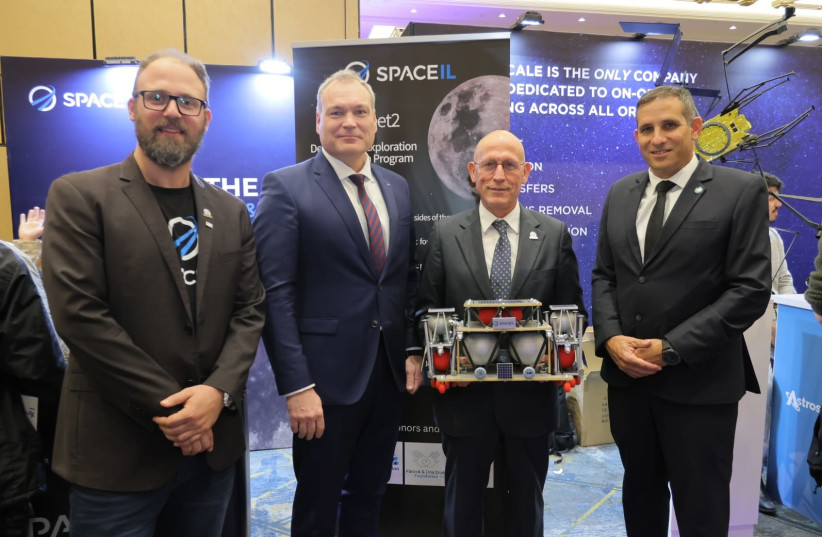SpaceIL and the German Aerospace Center launch new agreement

The mission is expected to launch 2025 and will produce data accessible globally
SpaceIL, NASA and the German Aerospace Center (DLR) have signed an agreement for the ‘Beresheet 2’ space mission. This will be the second lunar mission by SpaceIL.
The mission, which utilizes three different spacecraft missions, is expected to be complete by the middle of 2025.
The agreement
The agreement allows the joint use of a Crater Navigation algorithm, which identifies craters in images of the lunar surface and matches them to an onboard database. This provides information that acts like a GPS and will help to navigate the landing for the spacecrafts, and the overall goal of the mission.
Shimon Srid, SpaceIL CEO has stated, "We are honored to cooperate with DLR and use their software during our landing processes for Beresheet 2 mission and are thrilled to work together to perform successful lunar landings on both sides of the Moon in our next challenging lunar mission."
The mission
One of the goals of the mission is to break global records. The first record the agencies hope to complete a double landing in a single mission, while using one of the smallest landers to ever be launched. The landers weigh approximately 150 kg each.
The second accomplishment they hope for is to land on the far side of the moon – which only China has succeeded in so far.
The main craft, the Orbiter, is designed to orbit the moon for up to five years and intends to serve as a scientific educational platform that can be accessed worldwide through a remote connection. This remote connection will enable all countries to be united in their study of deep space.
SpaceIL
SpaceIL is a non-profit organization, founded in 2011, that aims to inspire future generations of scientists. They offer lectures for children, including Kindergarteners, and adults.
In 2019, the organization launched a low-cost lunar mission, which became the first non-governmental spacecraft to land on the moon.
In 2020, they launched ‘Genesis 2’ where they conducted a number of scientific experiments including the growing of plants on the moon.
SpaceIL has raised 85% of the needed funds through several philanthropic donations, including the Patrick and Lina Drahi Foundation, the Morris Kahn Foundation and the Moshal Foundation.
Jerusalem Post Store
`; document.getElementById("linkPremium").innerHTML = cont; var divWithLink = document.getElementById("premium-link"); if (divWithLink !== null && divWithLink !== 'undefined') { divWithLink.style.border = "solid 1px #cb0f3e"; divWithLink.style.textAlign = "center"; divWithLink.style.marginBottom = "15px"; divWithLink.style.marginTop = "15px"; divWithLink.style.width = "100%"; divWithLink.style.backgroundColor = "#122952"; divWithLink.style.color = "#ffffff"; divWithLink.style.lineHeight = "1.5"; } } (function (v, i) { });

